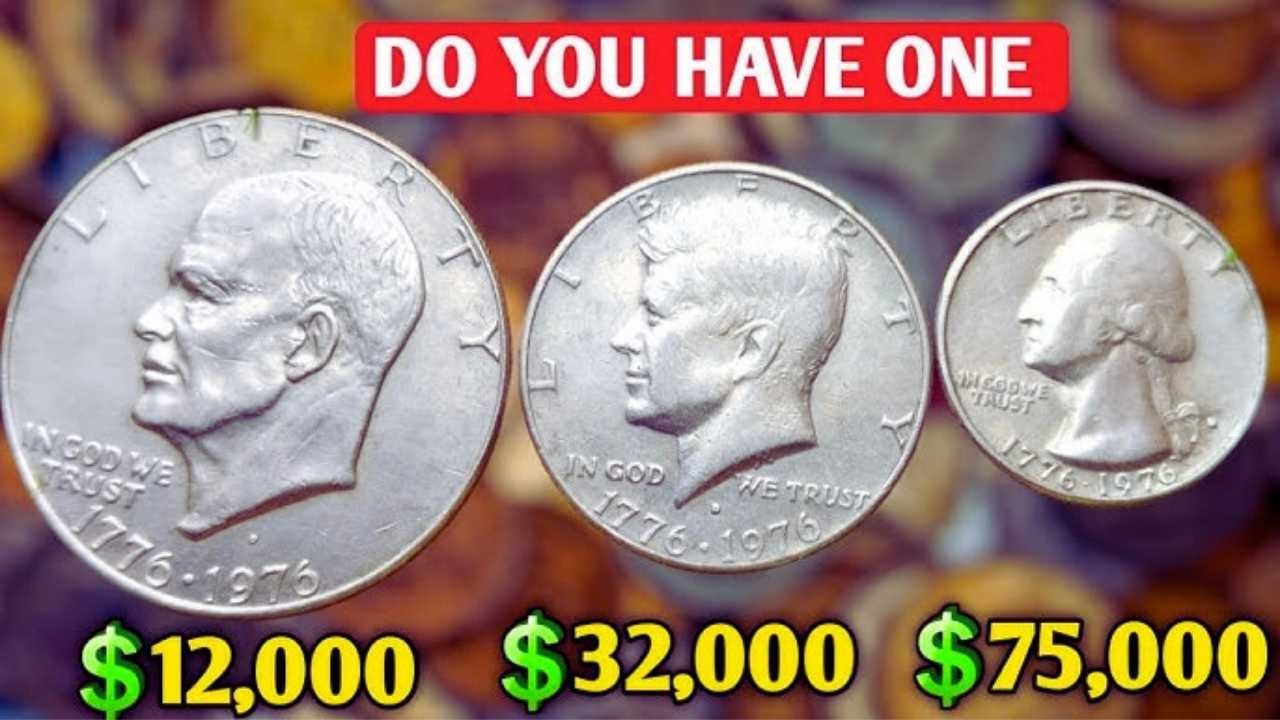Hey, folks, ever dig through your couch cushions or that old jar of loose change and wonder if you’re sitting on a gold mine? Well, in the world of coin collecting, that dream just got a whole lot wilder. Recent buzz has everyday Americans hunting for the 1976 Bicentennial quarter, a shiny piece of history minted to celebrate the nation’s 200th birthday. But here’s the kicker: some rare versions of this quarter are rumored to be worth a jaw-dropping $270 million each. That’s right, a single 25-cent coin could turn your spare change into lottery-level riches. With stories popping up online about folks finding these gems in grocery store lines or grandma’s piggy bank, the hunt is on. But is it real, or just hype? Let’s break it down.
A Blast from the Past: What Makes the Bicentennial Special
Back in 1976, America was throwing the party of the century for its bicentennial. Fireworks, parades, and yes, special coins to mark the occasion. The U.S. Mint cranked out over 1.6 billion Bicentennial quarters, featuring George Washington on the front with the dual dates “1776-1976,” and a cool colonial drummer boy on the back, flanked by a torch and olive branches. Most were made from copper-nickel clad, but a smaller batch in San Francisco used 40% silver for collectors. These coins flooded pockets nationwide, so today, they’re super common. A beat-up one? Still just 25 cents. But hold on, because that’s where the real story gets exciting. In a sea of ordinary quarters, a handful stand out like hidden treasures, thanks to tiny mistakes made way back when.
The Errors That Turn Pennies into Fortunes
What flips a regular Bicentennial quarter into a mega-prize? It’s all about those factory flubs, or “minting errors,” that make each one-of-a-kind. Numismatists, those are the coin experts, say the big winners come from things like doubled-die strikes, where the design gets stamped twice and looks ghostly doubled. Or off-center hits that leave part of the image missing. Even rarer? Coins struck on the wrong metal blank, like a quarter smashed onto a dime’s silver planchet. Recent chatter points to eight super-rare examples floating around, each supposedly packing that $270 million punch. But experts are quick to pump the brakes: no verified sale has hit even close to that number. The top real auction? A near-perfect silver proof went for $19,200 back in February 2025. Still, error coins have sold for thousands, like a doubled-die beauty fetching $8,400. If you’ve got one in pristine shape, it could be your ticket to early retirement.
To spot the keepers, check out this quick guide on key features and values:
| Feature or Error | Description | Average Value Range |
|---|---|---|
| Standard Clad (Circulated) | Common copper-nickel, worn from use | $0.25 – $1 |
| Uncirculated Silver (S Mint) | Shiny 40% silver, no wear | $5 – $20 |
| Doubled Die Obverse | Doubling on “LIBERTY” or motto | $100 – $8,400 |
| Off-Center Strike | Design shifted, partial image | $50 – $1,000 |
| Wrong Planchet (Dime) | Struck on smaller silver blank | $500 – $12,000 |
| Top-Grade MS68 (No Error) | Flawless condition, no mistakes | $100 – $19,200 |
These numbers come from recent auctions and can shift with market vibes, so get yours checked by a pro.
Busting the Myths: Why $270 Million Sounds Too Good to Be True
Okay, let’s talk turkey. That $270 million figure? It’s lighting up social media and clickbait sites, with claims of eight secret coins still bouncing around in change jars. One story even ties it to a hush-hush 2024 private sale. But dig deeper, and top coin pros call it straight-up fantasy. No auction house or official record backs it up, and with billions minted, the odds of a mega-rare error slipping into circulation are slim. It’s like winning the lotto twice – fun to dream about, but don’t quit your day job. Still, the hype isn’t all bad. It’s got folks pulling out magnifying glasses and apps to scan their coins, turning a boring chore into a treasure hunt. And hey, even if you don’t strike gold, you might snag a $20 uncirculated silver one, which beats buying coffee.
How to Hunt Like a Pro and Cash In
So, ready to raid your wallet? Start simple: grab a bright light and a magnifying glass. Look for that “S” mint mark below the date for silver versions, or fuzzy doubling on the letters. Skip the cleaning – it can wreck the value faster than you can say “oops.” If something looks off, snap clear photos from both sides and hit up a local coin shop or online grader like PCGS or NGC. Apps like CoinSnap can give a quick once-over too. Pro tip: Wear cotton gloves to avoid fingerprints, and store suspects in soft holders. States like Texas and Ohio are hot spots for finds, per recent reports, but any vending machine could be your lucky spot. Who knows? That quarter from the laundromat might just rewrite your story.
Wrapping Up the Coin Craze
At the end of the day, the Bicentennial quarter isn’t just about bucks – it’s a shiny slice of American pride, reminding us of barbecues, flags waving, and that unbeatable spirit from ’76. Sure, the $270 million tale might be more tall tale than true blue, but it shines a light on the real magic: everyday items hiding big surprises. Whether you’re a collector stacking sets or just a curious Joe checking change, this frenzy proves history’s got value if you look close. So next time you pay for tacos, give that quarter a wink. Godzilla might not roar, but your pocket could purr with possibility. Happy hunting, America – may your change bring change.
